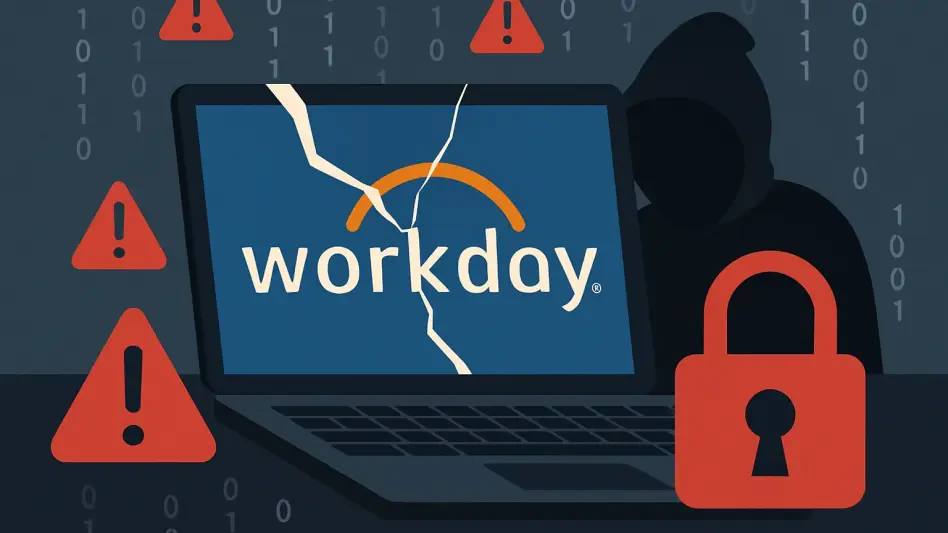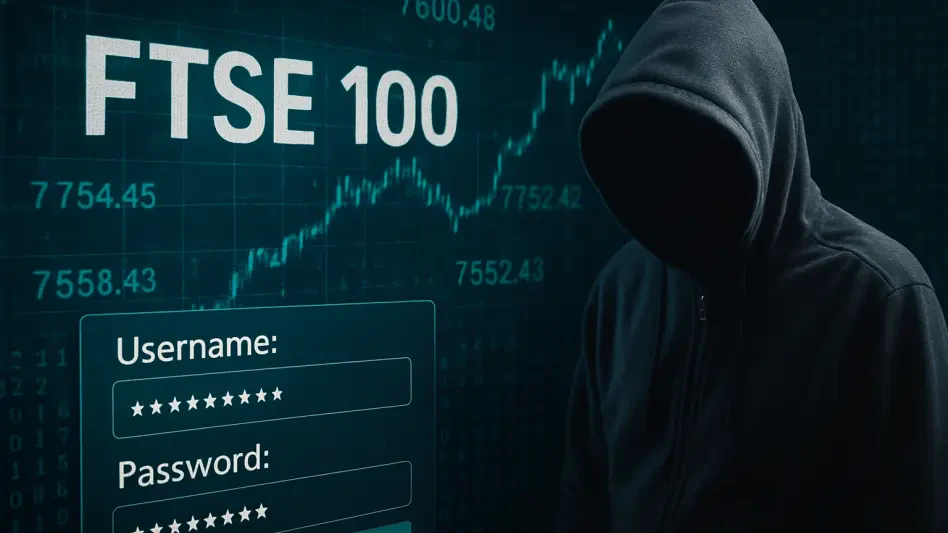In an era where digital transformation defines business operations, the sophistication of cyber threats has reached unprecedented levels, with ransomware, phishing, and state-sponsored attacks threatening organizations across the globe. As companies increasingly adopt a digital-first mindset, the urgency to protect sensitive data and critical infrastructure has never been more pronounced. Cyber Threat Intelligence (CTI) has emerged as a cornerstone of modern cybersecurity, equipping businesses with real-time insights and proactive strategies to counter evolving dangers. This vital tool not only identifies emerging risks but also anticipates attacker behavior, offering a strategic advantage in a landscape where traditional defenses like firewalls and antivirus software often fall short. The demand for CTI providers has surged, as enterprises of all sizes seek to safeguard their digital assets against relentless adversaries. This article delves into the leading companies shaping the CTI space today, exploring their innovations, unique strengths, and the trends driving their success. From global giants to niche specialists, these firms are redefining how organizations combat cybercrime. Whether managing sprawling corporate networks or protecting mid-sized operations, understanding the capabilities of top CTI providers is essential for building resilient defenses. Let’s uncover the key players and technologies leading the charge in this critical domain, providing a roadmap for businesses aiming to stay ahead of the curve.
The Critical Role of Cyber Threat Intelligence Today
The digital environment of today demands far more than conventional cybersecurity measures to keep organizations secure from increasingly complex threats. With cybercriminals constantly refining their tactics, businesses can no longer rely solely on reactive tools to protect their assets. Cyber Threat Intelligence offers a proactive solution by providing actionable insights derived from extensive data analysis across multiple sources. This approach enables companies to detect potential attacks before they materialize, shifting the focus from mere response to strategic prevention. By understanding the nature of threats in real time, CTI empowers organizations to allocate resources effectively, ensuring that defenses are robust where vulnerabilities are most likely to be exploited. This intelligence-driven mindset is particularly crucial for industries handling sensitive information, such as finance and healthcare, where a single breach can have catastrophic consequences. The ability to anticipate and neutralize risks positions CTI as an indispensable element of any comprehensive security strategy, reflecting a broader shift toward foresight in cybersecurity planning.
Beyond its role in early detection, CTI excels in dissecting the specific methods and behaviors of cyber adversaries, often referred to as tactics, techniques, and procedures (TTPs). By mapping these patterns, companies can customize their security protocols to address the most relevant risks to their operations. This tailored approach ensures that defenses are not only broad but also precise, targeting the unique challenges faced by each organization. For instance, a multinational corporation might prioritize protection against state-sponsored espionage, while a retail business could focus on combating phishing schemes aimed at customer data. Such customization distinguishes CTI from generic security solutions, offering depth that generic tools often lack. Moreover, the integration of CTI into daily operations fosters a culture of vigilance, encouraging teams to continuously adapt to an ever-changing threat landscape. This dynamic capability underscores why CTI has become a fundamental pillar for businesses aiming to maintain trust and operational integrity in a digital world.
Emerging Trends Redefining Threat Intelligence
One of the most significant developments in the CTI arena is the seamless integration of intelligence with existing security frameworks, marking a departure from standalone solutions. Today, leading providers embed threat intelligence directly into endpoint protection, network security tools, and other critical systems, creating a unified defense mechanism. This convergence simplifies the management of complex digital environments, allowing security teams to access insights without navigating disparate platforms. The result is a more streamlined operation where intelligence enhances every layer of protection, reducing response times and minimizing gaps in coverage. For organizations juggling multiple tools and vast infrastructures, this trend represents a practical evolution, ensuring that intelligence is not an afterthought but a core component of cybersecurity architecture. It also reflects a growing recognition that fragmented approaches are no longer viable against sophisticated, multi-vector attacks.
Another transformative force in CTI is the widespread adoption of Artificial Intelligence (AI) and Machine Learning (ML) to process and analyze enormous volumes of data at unparalleled speeds. These technologies enable the identification of subtle patterns and anomalies that might indicate emerging threats, such as zero-day exploits or novel attack vectors. By predicting potential risks before they manifest, AI and ML provide a critical window for organizations to fortify their defenses proactively. This capability is particularly vital in an era where attackers leverage automation to launch rapid, large-scale campaigns. The precision and efficiency of these tools allow security teams to focus on strategic decision-making rather than sifting through endless alerts. As a result, businesses can maintain a competitive edge, staying ahead of adversaries who continuously evolve their methods. This technological advancement is reshaping how threat intelligence operates, prioritizing speed and foresight over traditional, slower analytical approaches.
Cutting-Edge Technologies Powering CTI Solutions
At the forefront of CTI innovation is the application of AI-driven analytics, which has become a defining feature among industry leaders. By processing billions of data points from diverse sources, including open web content and technical feeds, these systems uncover hidden risks that manual efforts might overlook. The ability to detect subtle indicators of compromise in real time transforms how organizations approach cybersecurity, shifting the emphasis from reaction to prevention. This technology not only identifies current threats but also forecasts future attack patterns, providing a strategic advantage against adversaries. For enterprises managing vast digital footprints, AI-driven insights are invaluable, offering clarity amidst the noise of constant data streams. The scalability of such solutions ensures that businesses of varying sizes can benefit, adapting the technology to their specific threat landscapes. This innovation continues to set the standard for what effective threat intelligence can achieve in safeguarding critical assets.
Equally important is the seamless integration of CTI with Security Operations Center (SOC) tools and Security Information and Event Management (SIEM) systems, a hallmark of top-tier providers. This compatibility ensures that intelligence enhances rather than disrupts existing workflows, allowing security teams to act on insights without overhauling their setups. By embedding threat data into these platforms, organizations can correlate alerts with broader security events, improving the accuracy of threat detection and response. This synergy is particularly beneficial for teams managing complex environments, where siloed tools can create blind spots. The focus on integration also reduces the learning curve for adopting new intelligence solutions, enabling faster deployment and utilization. As cyber threats grow in sophistication, the ability to unify intelligence with operational tools becomes a critical factor in maintaining robust, efficient defenses across all levels of an organization.
Spotlight on Industry Leaders and Their Innovations
Among the frontrunners, Recorded Future distinguishes itself with its predictive intelligence capabilities, harnessing AI to deliver unmatched global threat visibility. Its platform analyzes data from a vast array of sources, providing early warnings of potential attack campaigns through user-friendly, customized dashboards. This makes it a preferred choice for large enterprises and government entities that require comprehensive, forward-looking insights. However, its premium pricing structure can pose a challenge for smaller organizations with limited budgets. Despite this, the depth of its analytics and focus on proactive security solidify its position as a heavyweight in the CTI domain. For businesses prioritizing foresight over cost, this provider offers a robust solution to navigate the complexities of today’s threat environment, ensuring they remain prepared for emerging risks.
Anomali stands out for its emphasis on scalability, tailoring threat intelligence to the specific risks faced by individual organizations. By correlating data with unique operational environments, it delivers highly relevant insights, further enhanced by adversary mapping through frameworks like MITRE ATT&CK. This precision makes it an excellent fit for mid-to-large enterprises seeking customized defenses. While its platform requires some initial training to maximize effectiveness, the investment pays off in the form of actionable intelligence that aligns closely with organizational needs. Its adaptability ensures that businesses at various growth stages can leverage its tools without overextending resources. Anomali’s approach exemplifies how flexibility and specificity can coexist, offering a balanced solution for companies aiming to refine their security posture against targeted threats.
CrowdStrike redefines CTI by integrating it directly with endpoint security, creating a cohesive platform that excels in managed threat hunting and nation-state profiling. Its cloud-native architecture supports scalability, accommodating the needs of expansive corporate networks with ease. While the cost of additional features may accumulate, the value of a unified system that combines intelligence with protection is undeniable for enterprises seeking streamlined solutions. This integration reduces operational friction, allowing security teams to respond swiftly to incidents without toggling between disparate tools. CrowdStrike’s focus on merging these capabilities highlights a growing demand for all-in-one security ecosystems, particularly among businesses with complex, distributed infrastructures requiring consistent, real-time oversight.
Specialized Players Addressing Niche Threats
IBM Security leverages the expertise of its renowned X-Force research team to offer enterprise-grade threat intelligence, bolstered by predictive capabilities through advanced technologies. Its comprehensive suite of services, including simulated attack exercises, caters to large organizations with intricate security demands. However, the complexity of deployment can be a hurdle for smaller teams lacking extensive technical resources. Despite this, IBM’s reputation for reliability and depth of insight makes it a trusted choice for entities prioritizing robust, research-backed defenses. Its ability to deliver tailored intelligence ensures that even the most sophisticated threats are addressed with precision, providing a strategic edge for businesses operating in high-stakes environments. This focus on enterprise-level solutions reflects a commitment to tackling the most challenging aspects of cybersecurity with unmatched expertise.
Mandiant brings a unique perspective to CTI through its deep roots in incident response, offering insights derived from real-world breach investigations. Its intelligence is particularly valuable for high-risk industries such as finance and critical infrastructure, where understanding attacker behavior is paramount. While its consulting services come at a premium, the expertise provided is often unrivaled, making it a go-to for organizations needing rapid, effective responses to crises. Mandiant’s strength lies in bridging the gap between theoretical intelligence and practical application, ensuring that businesses can translate data into actionable countermeasures. This hands-on approach is a differentiator in a field often dominated by automated solutions, offering a human-centric lens on complex cyber challenges that require nuanced understanding and immediate action.
Digital Shadows specializes in digital risk protection, focusing on monitoring the dark web for exposed data, credential leaks, and threats to brand integrity. Its platform delivers actionable insights through automation, though realizing its full potential often requires integration with existing SOC frameworks. This makes it an ideal choice for companies prioritizing external risk mitigation over internal network security alone. By addressing threats that originate outside traditional perimeters, Digital Shadows provides a critical layer of defense against reputational and financial damage. Its targeted approach ensures that organizations concerned with brand abuse or data leaks have a dedicated tool to safeguard their digital presence, highlighting the importance of a broader security perspective in today’s interconnected landscape.
Niche Experts and Legacy Innovators in CTI
FireEye, a longstanding name in threat intelligence, combines validated insights with malware forensics to offer in-depth profiling of advanced persistent threats (APTs). Despite recent corporate transitions and a higher cost structure, its legacy of trust and research excellence continues to attract enterprises needing reliable, detailed intelligence. Its ability to dissect complex threats through expert analysis sets it apart in a market increasingly reliant on automation. FireEye’s focus on delivering contextually relevant data ensures that security teams can act with confidence, particularly when facing sophisticated adversaries. For organizations valuing proven methodologies over newer, untested solutions, this provider remains a cornerstone of effective threat management, blending historical expertise with modern demands.
Flashpoint hones in on fraud detection and underground criminal activity, providing specialized insights into dark web communities and business risks that extend beyond traditional IT concerns. Its niche focus makes it particularly suited for financial services and government agencies where such threats can have profound operational impacts. While its specialized functionality might overwhelm smaller security operations centers, its unique perspective on non-conventional risks fills a critical gap in the CTI landscape. Flashpoint’s ability to uncover hidden threats in obscure corners of the internet offers organizations a deeper understanding of potential vulnerabilities, ensuring that risks like fraud and insider threats are not overlooked. This targeted expertise underscores the diverse nature of cyber threats and the need for tailored intelligence solutions.
RiskIQ, now operating under a larger tech umbrella, leads in external attack surface management by mapping digital footprints to detect phishing schemes and malicious infrastructure. Its enterprise-centric design and inherent complexity may limit accessibility for smaller entities, but its value in brand protection and external risk visibility is undeniable. By providing a clear picture of an organization’s online exposure, RiskIQ enables proactive measures to secure digital assets before they are exploited. This focus on external threats complements internal security efforts, offering a comprehensive approach to safeguarding reputation and data. For companies with significant online presence, its tools are essential in navigating the risks inherent in expansive digital environments, ensuring that no vulnerability goes unnoticed.
Charting the Path Forward for Cybersecurity
Reflecting on the landscape of Cyber Threat Intelligence, it’s evident that the top companies have set a high standard by blending cutting-edge technology with specialized expertise to combat an ever-evolving array of digital threats. Their efforts have demonstrated a clear shift toward proactive, intelligence-driven security, ensuring that organizations are not merely reacting to breaches but anticipating them with precision. Each provider, from Recorded Future’s predictive analytics to RiskIQ’s external risk focus, has contributed uniquely to a robust ecosystem of solutions that address diverse organizational needs. This diversity has proven crucial, as businesses across industries face distinct challenges requiring tailored defenses.
Looking ahead, stakeholders should prioritize aligning with CTI providers that match their specific risk profiles and operational scales, ensuring that investments yield maximum protective value. Exploring scalable options or integrated platforms could bridge accessibility gaps, particularly for smaller entities previously deterred by cost or complexity. Additionally, fostering collaboration between automated systems and human expertise will remain vital, as the nuanced understanding of attacker behavior often requires a blend of both. As threats continue to evolve, staying informed about advancements in AI and external monitoring will be essential for maintaining resilience. By adopting these strategies, organizations can build on the foundation laid by today’s leaders, fortifying their defenses for whatever challenges the digital future may hold.








